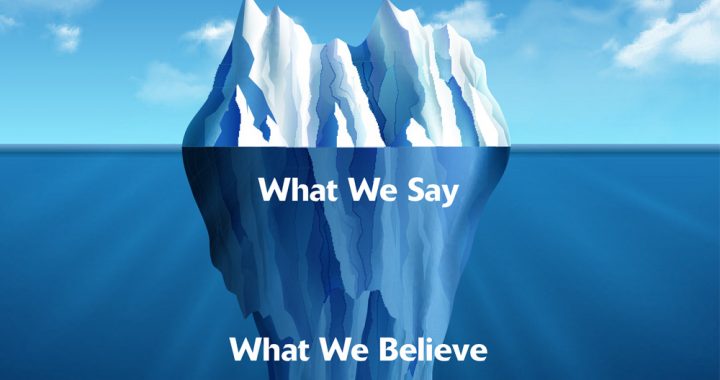Anthropologist and cross-cultural researcher Edward Hall has compared culture to an iceberg. What we see in terms of processes, policies, and behaviors exists above the surface. This part of culture is visible. But it’s just the tip of the iceberg.
Introduction
For about 15 years, I worked to absorb every facet of the surveying business from the ground up at DPK Consulting. As I expanded my knowledge and expertise, I started to look beyond my day-to-day responsibilities and develop my own vision for not only DPK, but the surveying profession. DPK leadership recognized this and told me I would lead the company someday.
When I became CEO, I quickly realized that growing the company would provide us with the resources to achieve my vision for DPK and contribute to strengthening the land surveying profession. This would require extensive education, new technology, better processes, and innovative solutions.
I knew a change in culture would be essential to achieving this goal. Developing a long-term vision for DPK, implementing that vision, getting people to understand and buy into that vision, and identifying leaders who would fully support and carry out that vision would be a long process.
Five years later, the evolution of the DPK culture has come into focus and the organization is beginning to thrive as a result. I wanted to share that journey and insights gained about company culture as part of a three-part series of articles:
- Understanding what culture is and why it matters
- The role of leadership in navigating culture issues
- How to successfully change organizational culture
The first step in this process was to define culture in general terms, examine the existing DPK culture, and create a vision of what the DPK culture should be.
So, what Is culture?
Culture is a system of shared values, beliefs, attitudes, and assumptions that guide how an organization’s people behave, interact with others, and make decisions.
Anthropologist and cross-cultural researcher Edward Hall has compared culture to an iceberg. What we see in terms of processes, policies, and behaviors exists above the surface. This part of culture is visible. But it’s just the tip of the iceberg.
The much larger part of culture, which ultimately drives what an organization accomplishes, exists below the surface. This part of culture – your values, beliefs, perceptions, aspirations, stories, and feelings, require much more exploration to understand and cultivate.
While the visible tip of the iceberg focuses on how you say you get things done, the invisible part below the surface determines how things really get done. It’s also essential to preparing for and implementing cultural change.
15 years at DPK taught me that we, like many small companies in technical services, with unpredictable conditions and tight deadlines, lived in a perpetual state of controlled chaos. Work was getting done and done well, but the process behind the scenes was not as seamless as it should have been. People were rarely empowered to think for themselves, so the CEO typically had to step in and personally make sure work was getting done. That model allowed for DPK to function but made it difficult, if not impossible, to grow.
I thought back to a book called Turn the Ship Around by L. David Marquet. The overarching message focused on whether a strong culture is based on telling people when to push the button or explaining why to push the button.
When you explain why to push the button, people learn the purpose of each task and how it affects our team and the client. With greater understanding comes more support for the vision of the organization and more opportunities for each individual to grow.
This is the kind of culture I wanted to implement at DPK.
The Difference Between “Good” and “Great”
It had been a long time since I first read the book Good to Great by Jim Collins, but I told myself that “good” just wouldn’t cut it for me. I wanted DPK to be great.
While culture generally reflects the vision of the company’s leader, all efforts to improve the culture were about DPK as an organization. I knew we needed the right team to reach our goals.
You can have a talented group of employees who are great at what they do, but to grow and be great, everyone needs to move forward together as a cohesive team. This is why culture is so important.
Everyone must understand and believe in what the company stands for, why the company functions the way it does, and what the company is trying to achieve. Culture builds team unity and ensures everyone is moving in the same direction with the same purpose.
As more of the company culture comes to the surface, you find out who supports the culture and who doesn’t. Your team starts to take shape and leaders are identified.
At DPK, we’ve gone through significant turnover in company leadership during the past five years. That’s not a bad thing. Personnel change can be difficult, but it’s often a necessary step in building a team filled with people who live and breathe the culture you’re trying to build.
In Part 2 of this series on culture, I’ll discuss the role of leadership and employees in navigating culture issues and the most common challenges that need to be overcome.





